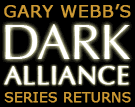
|
Interactive Video and an assessment of its require
NOTICE: TO ALL CONCERNED Certain text files and messages contained on this site deal with activities and devices which would be in violation of various Federal, State, and local laws if actually carried out or constructed. The webmasters of this site do not advocate the breaking of any law. Our text files and message bases are for informational purposes only. We recommend that you contact your local law enforcement officials before undertaking any project based upon any information obtained from this or any other web site. We do not guarantee that any of the information contained on this system is correct, workable, or factual. We are not responsible for, nor do we assume any liability for, damages resulting from the use of any information on this site.
Henry Clark
1:124/6120
Interactive Video -
I just got back from Supercomm '91 in Houston. It's an
exhibition of TelCo products ranging from line splicing tools
to SONET cross connects. I saw very little ISDN and quite a
lot of 'fiber to the home'. I think you might be interested.
You use a modem, and you have an analog phone system in your
house. Down at your neighborhood switch box, these analog
signals are converted to digital signals. This bit rate is
called the T0 rate; it's about 64 Kbps ( bits per second ).
ISDN proposes to connect you with 2 T0 digital links plus a 16
Kbps data link ( the 2T Plus D ).
After adding some overhead to a T0 signal for diagnostic and
management purposes, a DS0 format is generated, and this is the
basic rate for most transmission systems used today. For
transport purposes, 24 DS0 signals are bundled together to form
a DS1 signal format. This is the signal passed between your
neighborhood box to the TelCo Central Office ( that big
building with no windows ! ).
Bundling 28 DS1s together ( with more overhead channels ) gives
you a DS3 rate, and that is trunk level signal that is passed
between major switching stations, large corporations and long
distance phone companies.
Backtracking a little, DS0 is 64 Kbps, DS1 is 1.5 Mbps ( million
bits per second ) and DS3 is 45 Mbps. A new international
standard called SONET provides a basic signal level called
STS-1 and this is a 50 Mbps. While the DSx formats are
asynchronous signals, the STS-1 is a synchronous signal. Given
the base of DS3 equipment, there are several vendors of DS3 to
STS-1 conversion units.
Continuing with ever faster rates, SONET defines the OC-3 rate
( 3 STS-1 signals ) for 150 Mbps. OC stands for Optical
Circuit. And of course there is the OC-12, OC-24 and OC-48
rates; OC-48 being 2.4 Gigabits per second. Now lets put all
this in perspective.
The fiber optic cable being laid in the ground today will carry
at a maximum ONE OC-48 signal. For example, the entire Florida
backbone is carried on 6 fibers. The typical maximum for
buried fiber is 40 strands. These 40 OC-48s can represent
almost 1.3 million active phone calls, or 1920 full motion
digital video signals. Clearly an insufficient amount of
bandwidth to put two-way video into every home. Not enough,
even if the bandwidth is increased by 1000 times.
There are currently three types of digital video transmission
formats, with different compression algorithms, even at the
same rate. The most common, highest quality is the 45 Mbps or
DS3 rate. The coder/decoder ( codex is analogous to modem ) is
the least expensive, but as we can see from the above DS3
descriptions, the transport bandwidth is the most expensive.
The least used is 1.5 Mbps. Growing fast for commercial usage
in video conferencing is the dual 56 kbps format. While the
codex units are very expensive, the transport media is simply
two phone lines. The problem with this format is that it only
operates at about 3 frames per second. ( Broadcast quality is
33 Fps. ) This low quality video is unsuitable for most uses.
The accepted theory is that the codex for good quality dual T0
video is five years away.
Why do I mention video ? Well, what else is there ? We have
voice and data. You have probably transferred a GIF or a FLI,
which are the still and animated equivalents of photographs.
Video is the last frontier for image transmission for this
decade, anyway.
Another reason to mention video transmission is the television
cable industry, which is now beginning to DIE. You've heard of
junk bonds. Cable companies were heavily financed by junk
bonds, and now it's time for them to start paying up. As a
result, you see service prices rising, and growing complaints
from consumers. The accepted theory is that TelCos will have
permission to offer video in five years.
Given the current technology, this permission will prove nearly
useless in the implementation of interactive video. Broadcast
video, maybe, but interactive only in local areas. Any
improvements in video compression will be too expensive for the
home owner. Next time I'll outline the different methods in use
today for interactive television.
|

|

